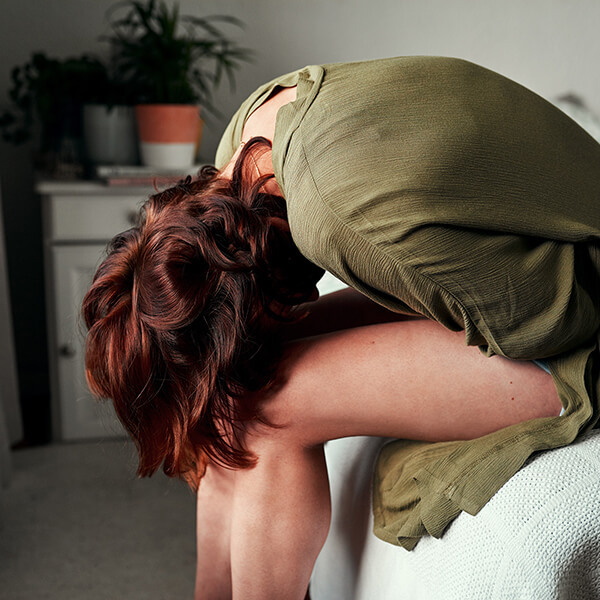
Endometriosis is a health condition where tissue similar to the lining of the uterus grows outside of it. This tissue causes pain, heavy periods, fatigue, and pain during sex. It can also impact mood, body image, and relationships.
If you’re living with endometriosis, know that support is available. At DOXXES on North Freeway / FM 1960, we offer products and guidance to help you feel more comfortable and in control.
What Is Endometriosis?
Normally, the uterine lining builds up and sheds each month. In endometriosis, similar tissue grows in places like the ovaries, bladder, bowel, or pelvic walls. Since it can’t leave the body, it builds up and leads to pain, swelling, or scarring.
Common types include:
- Superficial peritoneal: on the surface of pelvic organs
- Ovarian endometriomas: cysts on the ovaries
- Deep infiltrating endometriosis: growing into pelvic walls or organs
Pain may be cramping, stabbing, or deep—and it can worsen over time.
Why Does Endometriosis Happen?
There’s no single known cause. It may involve a mix of emotional, physical, and hormonal factors.
Emotional triggers:
- Chronic stress
- Trauma
- Relationship tension
Physical triggers:
- Inflammation in the pelvic area
- Hormonal imbalances, like high estrogen
- Tight pelvic muscles
- Uterine or pelvic structure issues
Since many factors may overlap, a combination of treatments often works best.
Recognizing Symptoms and Triggers
Common signs of endometriosis include:
- Severe period cramps
- Heavy bleeding or clots
- Missed or irregular cycles
- Pain during or after sex
- Discomfort with bowel movements or urination—especially during your period
To learn your patterns:
- Keep a symptom journal
- Track pain before and after sex or your period
- Try small changes—like using more lube or switching positions—and see what helps
Who Endometriosis Affects
Endometriosis affects anyone with a uterus, including:
- Cisgender women
- Trans men
- Nonbinary people assigned female at birth
It usually appears in your 20s or 30s but can start in your teens. It affects both physical and emotional well-being.
Men don’t get endometriosis, but they can support loved ones who do. Learning together makes a big difference.
How a Sex Therapist Can Help
If endometriosis causes pain or stress around sex, a sex therapist can help. They can:
- Explore your pain history and emotional triggers
- Help manage fear or sadness
- Teach breathing, relaxation, or body positioning
- Guide conversations with partners
Managing and Treating Endometriosis
There’s no cure, but many options can reduce symptoms. A treatment plan may include:
- Over-the-counter or prescription pain meds
- Birth control pills or hormone IUDs
- Pelvic floor physical therapy
- Minimally invasive surgery
- Counseling for emotional support
- Lifestyle changes like yoga, diet, or stress relief

How DOXXES.love Can Help
We carry tools designed to ease discomfort, especially for those managing chronic pain. Some favorites include:
- Water-based lubricants: reduce friction during intimacy
- Pelvic floor exercisers: support muscle strength and relaxation
- Soft vibrators: improve blood flow and comfort
- Prostate massagers: support pelvic well-being and shared pleasure
All products come with clear instructions for safe use. Many find that combining these tools with medical or emotional care helps the most.
Talking About Endometriosis
It can feel hard to talk about endometriosis—especially when it affects sex. But honest conversations are a big step toward healing.
Tips for easier talks:
- Use “I” statements like “I feel pain during sex and want to talk about it.”
- Choose a quiet, relaxed time—not right before intimacy
- Share what works and what doesn’t
- Watch videos or read articles together
- Set boundaries—and stick to them
Visit DOXXES on North Freeway / FM 1960
Our space is private, warm, and welcoming. You can browse wellness tools, ask questions, and get advice—no pressure, no judgment.
We offer:
- Hands-on access to textures and tools
- Friendly, knowledgeable staff
- One-on-one support for comfort and confidence
Conclusion
Endometriosis may be invisible, but it’s very real. You deserve care, comfort, and tools that meet your needs. With the right support, it’s possible to find relief and reclaim joy in your body.
At DOXXES, we’re here to support your journey—every step of the way.
FAQs
- What is endometriosis?
It’s a condition where tissue like the uterine lining grows outside the uterus, causing pain, bleeding, and other symptoms. - What are the common symptoms?
They include period pain, heavy bleeding, fatigue, and pain during or after sex. - What causes endometriosis?
There’s no known single cause. It may involve genetics, immune issues, or backward flow of menstrual blood. - How is it diagnosed?
Doctors use exams, ultrasounds, MRIs, or laparoscopy to confirm the diagnosis. - Can it affect fertility?
Yes. It can block or damage reproductive organs, making it harder to get pregnant. - Is there a cure?
There’s no cure, but treatment can reduce symptoms and improve quality of life. - Can it return after treatment?
Yes, especially if hormone therapy is stopped. - Is it linked to other health conditions?
It can occur alongside IBS, bladder pain syndrome, or immune disorders. - Can diet help?
Yes. Some people find relief by following an anti-inflammatory or hormone-balancing diet. - Can it be mistaken for other conditions?
Yes, it’s often confused with IBS, pelvic infections, or ovarian cysts.
